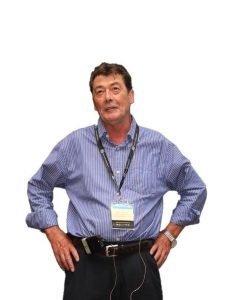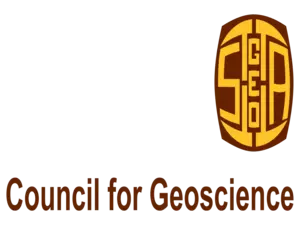
On Friday 17 February 2017, the Acting CEO of the CGS, Mr Mosa Mabuza hosted Professor Hiroshi Ogasawara from Ritsumeikan University, Japan. The purpose of this meeting was in furtherance of the collaborative agreement between the Ritsumeikan University, the CGS and the International Continental Scientific Drilling Program (ICDP), especially within the context of the MoU recently signed between the DMR and the Ministry of Economy, Trade and Industry of Japan (METI) at the 2017 Mining Indaba.
This collaborative agreement covers the involvement of the CGS within a deep drilling project entitled “Drilling into Seismogenic zones of the M2.0-5.5 earthquakes in South African gold mines (DSeis)” which was awarded by the ICDP and funded to an amount of 1 million USD.
This project stems from another similar project which was carried out under collaboration between the Japanese International Cooperation Agency (JICA) and the South African government. During the JICA project, the CGS was able to install 12 seismograph stations within the Carletonville mining region and thus assisted us in expanding our cluster networks to more mining regions in an effort to contribute to the safety in the mines.
In addition, the JICA project improved the amount of monitoring within the mines, and thus, when the big 5.5 magnitude earthquake occurred in August 2014, it was probably the most monitored large events which we have ever had. The CGS was one of the parties who could provide valuable data about this event and further enhanced our understanding. Together with in-mine seismic data and Japanese data, the combined data set offers opportunities for unprecedented detailed research in seismology to elucidate the seismogenic zone.
However, with all this data about the event there still remained a few questions unanswered. Such as, “Why did the event occur below the mining horizons?”, which is where this current ICDP project comes into play. The project involves drilling, borehole logging and core logging directly into the seismogenic zones to investigate the earthquake mechanism and associated activity and to learn more about underground water and geo-microbiology. The CGS plays a central role for core repository.
This is an international venture which involves scientists not only from Japan but also from Germany, USA, Switzerland, Israel, Australia and India.
“The CGS, as a national mandated authority on earth-sciences development, is proud to be part of this partnership with international protagonists in seismology. This ground-breaking partnership advances, not only the science, but the national developmental priorities”, articulates Mabuza.




